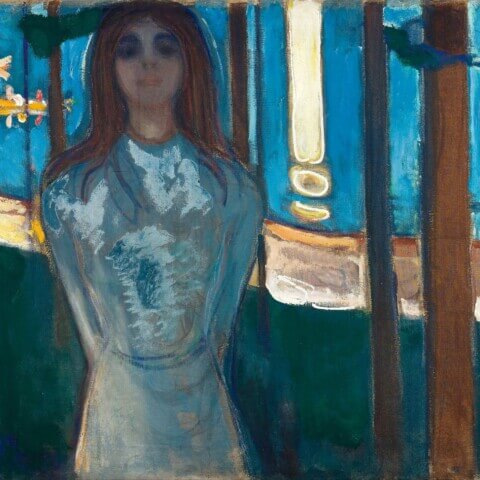Edvard Munch

Edvard Munch (1863-1944) was a groundbreaking Norwegian painter and printmaker whose emotionally charged style significantly influenced the 20th-century expressionist movement. Munch’s artistry was marked by symbolism and bold use of color, blending themes of life, death, anxiety, and sexuality in a dramatic and innovative manner.
Munch was born in Loten, Norway, and lived through a period of great change and upheaval in Europe, which greatly influenced his work. The deaths of his mother and sister during his childhood deeply affected him, and this sense of loss, combined with his own ill health, fuelled his exploration of themes like death, anxiety, and existential dread.
Munch is most famously known for his iconic painting, “The Scream” (1893), which has become one of the most recognized images in art history. “The Scream,” alongside his other works, embodies the style of Symbolism and later, Expressionism. Munch’s use of bold lines, dramatic scenes, and striking color palettes reflected his internal emotional experiences and presented a sharp break from the realistic depictions popular in the late 19th century.
Though often associated with the Symbolist and Expressionist movements, Munch’s style was uniquely his own. His work is seen as an important bridge between the artistic sensibilities of the 19th and 20th centuries, paving the way for further exploration of psychological and emotional themes in art. The legacy of Edvard Munch endures today, and his contributions to the world of art continue to be celebrated.












